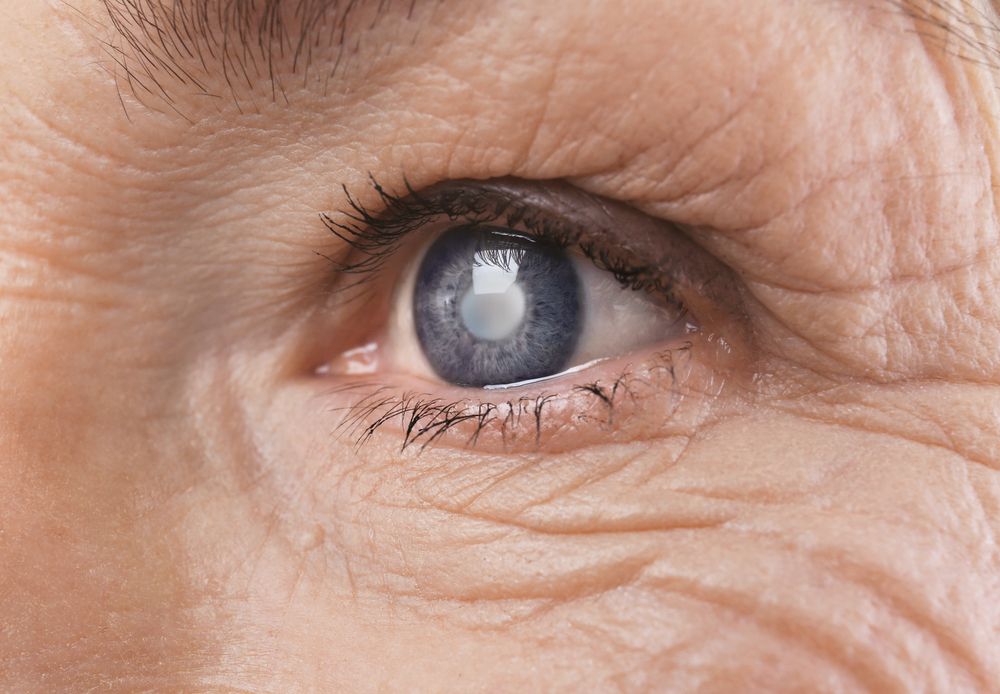What's the Difference Between Glaucoma and Cataracts?
 With age, vision frequently becomes less clear. For many people, glaucoma or cataracts are to blame for poor eyesight.
With age, vision frequently becomes less clear. For many people, glaucoma or cataracts are to blame for poor eyesight.
Although glaucoma and cataracts both affect eyesight, they have different symptoms and require different treatments. Drs. Eric J. Del Piero and Leland H. Rosenblum explain the differences between glaucoma versus cataracts to patients in Salinas, CA, and Monterey, CA.
For answers to your questions about glaucoma versus cataracts, we welcome you to schedule a consultation with Dr. Del Piero or Dr. Rosenblum.
What Is Glaucoma?
Glaucoma is a group of eye diseases that affect vision by causing damage to the optic nerve. The two primary types are open-angle glaucoma, which slowly progresses, and acute closed-angle glaucoma, which occurs quickly.
Glaucoma is typically characterized by a buildup of pressure within the eye. This buildup is caused by fluid retention. This pressure, called intraocular pressure, can damage the optic nerve, the nerve that sends images to the brain. As the optic nerve becomes damage, vision worsens.
What Are Cataracts?
Cataracts are cloudy areas that form in the lenses of the eyes. This clouding can interfere with vision, making it difficult to see clearly.
The aging process is the most common cause of cataracts, as proteins in the lenses of the eyes start to breakdown after the age of 40. As the breakdown of proteins progresses, the lenses may begin to cloud.
Even though the lenses may begin to cloud in a person's 40s, it can take years for clouding to be significant enough to cause vision problems.
The Symptoms of Glaucoma vs. Cataracts
Glaucoma interferes with vision by way of the optic nerve, whereas cataracts affect vision by clouding the lenses of the eyes. Because of this, the symptoms of glaucoma and cataracts are different.
The most common symptom of open-angle glaucoma is a loss of peripheral vision. Gradually, vision loss may extend beyond peripheral vision to total blindness.
Acute closed-angle glaucoma is a sudden condition and medical emergency with more severe symptoms, including:
- Throbbing eye pain
- Blurry or foggy vision
- Red eyes
- Halos around lights
The symptoms of cataracts generally develop over time as the lenses of the eyes become more clouded. Some common symptoms of cataracts include:
- Vision that is clouded, dimmed, or blurred
- Colors appearing faded or yellowed
- Light sensitivity
- Difficulty seeing at night
Treating Glaucoma and Cataracts
Both glaucoma and cataracts can be treated with surgery, but once vision is lost as a result of glaucoma, it cannot be restored.
When surgery is performed to treat glaucoma, the aim is to reduce intraocular pressure to prevent further damage to the optic nerve. A laser may be used to create a channel for fluid to drain from within the eye or a surgical implant may be placed to shunt fluid out of the eye. Sometimes medications are used to reduce intraocular pressure and control symptoms.
While surgery for glaucoma will not restore vision loss, cataract surgery can. Through cataract surgery, clouded lenses are removed and replaced with a new, artificial lens, helping our patients in and around Salinas and Monterey enjoy clearer vision.
Discover Your Treatment Options
Whether you have glaucoma or cataracts, seeking treatment is important to preserving your vision. To learn more about treatment options and find out which treatments are right for you, please call (831) 424-1150 to schedule an appointment.



